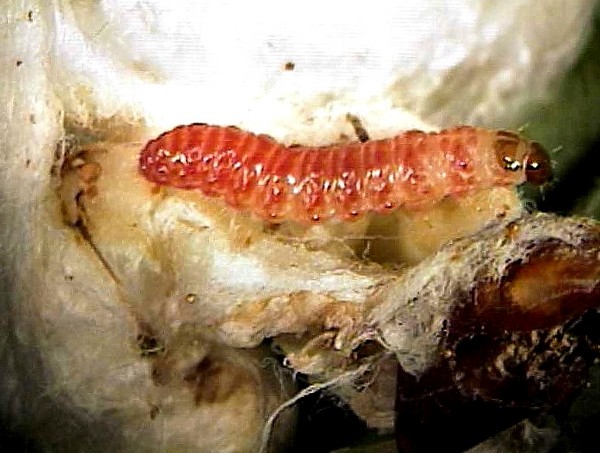
Cotton growers and industry leaders from California and Arizona say they’re ecstatic over the USDA’s announcement on Oct. 19 that the troublesome pink bollworm has been eradicated.
Agriculture Secretary Sonny Perdue said during a ceremony in Washington, D.C., that the pink bollworm has cost U.S. producers tens of millions of dollars in annual control costs and yield losses but “has been eliminated from all cotton-producing areas of the continental United States.
“As a result, USDA is lifting the domestic quarantine for pink bollworm, relieving restrictions on the domestic and international movement of U.S. cotton,” he said.
The secretary credited what he called “rigorous control and regulatory activities” on the part of the USDA, state agriculture departments and the cotton industry as a series of measures taken over several decades neutralized the devastating pest.
Roger Isom of the California Cotton Ginners and Growers Association agrees, noting that fighting the pink bollworm was so important to the Golden State’s growers that have gladly helped fund the USDA Animal and Plant Health Inspection Service’s Pink Bollworm Rearing Facility in Phoenix, Ariz.
“It’s a monumental occasion to completely eradicate a pest that has so devastated the cotton industry, particularly in California,” says Isom, the CCGGA’s president and chief executive officer.
Isom tells Western Farm Press that when he started in the industry in 1992, cotton growers in the Imperial Valley were spraying seven times a year to get rid of the bollworm and weren’t having much luck.
Working with producers
APHIS has been working with producers in California, Arizona, New Mexico and Texas, as well as cotton-growing areas in Mexico, to eradicate the pest. Its rearing facility is the source of all sterile moths used in the eradication program, producing about 22 million moths per day, according to its website. Eradication efforts also included surveys, the use of genetically modified cotton and pheromone applications for mating disruption, the agency explains.
Clyde Sharp, an Arizona grower who co-chairs the National Cotton Council’s Pink Bollworm Action Committee with California grower Ted Sheely, expressed gratitude for the efforts during Perdue’s ceremony.
“On behalf of the cotton producers who have battled the pink bollworm most of their career, and those that battled the pink bollworm before us, we thank everyone that has made this day possible,” he said. “Amazingly, the pink bollworm eradication program relied mostly on insect control measures that were least disruptive to the agro-ecosystem.”
The pink bollworm was first detected in the United States in Hearne, Tex., in 1917, and by the mid-1950s, the pest had spread to surrounding states and eventually reached California in 1963, according to the USDA.
In 1955, APHIS established domestic pink bollworm regulations. At the height of the program, 10 states – Arizona, Arkansas, California, Louisiana, New Mexico, Oklahoma, Texas, Nevada, Mississippi, and Missouri – were quarantined for the pest. After many infestations were suppressed through various programs, only Arizona, California, New Mexico and Texas remained under regulation as of 2003, according to an NCC news release.
Perdue noted that cotton growers were critical to eradicating the pest, cooperating on a coordinated, multi-state program and shouldering 80 percent of the program’s cost.
About the Author(s)
You May Also Like






